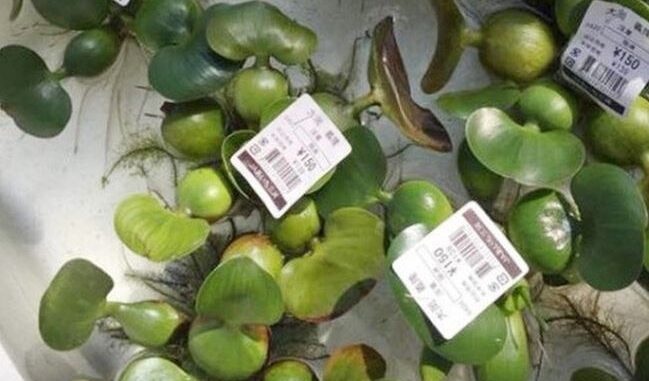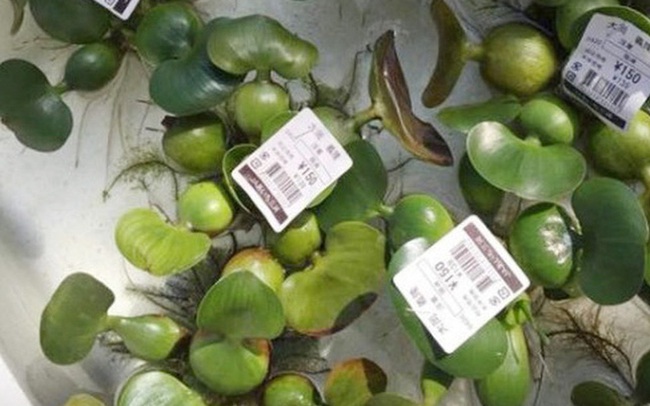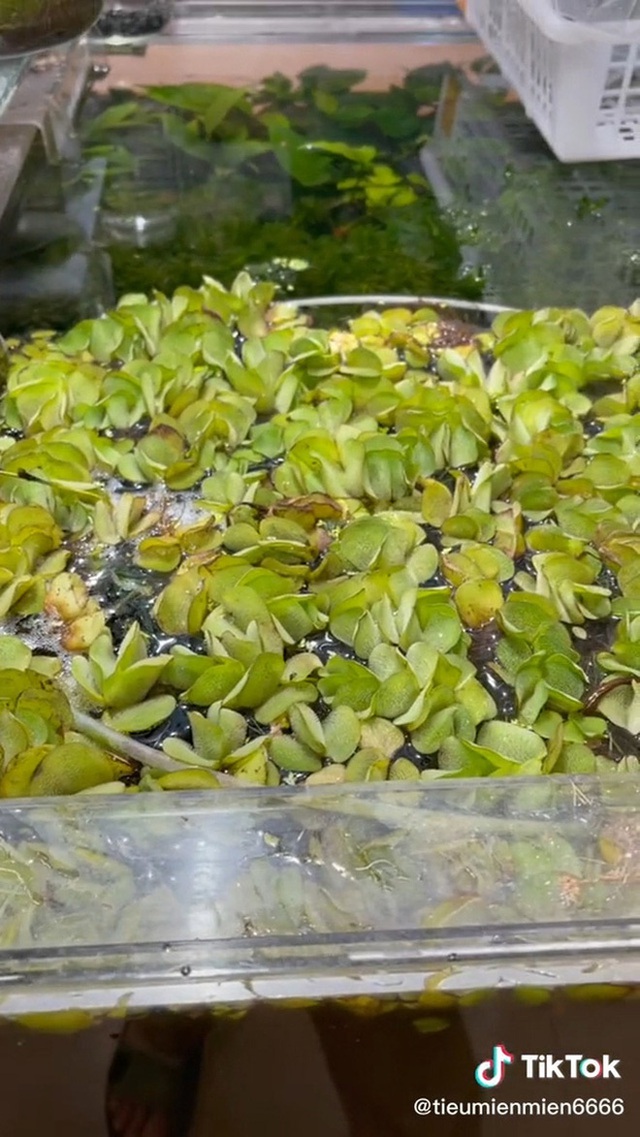
Hyacinth is a plant that lives in abundance, growing wild in ponds and lakes in rural areas. But when it is sold online, it costs up to 50,000 VND / plant, even in Japan, water hyacinth is also packaged and sold by the plant.($1=24,000 VND)
A site specializing in aquatic plants is selling many types of water hyacinths, with prices that startle farmers. Japanese female duckweed costs 50,000 VND/plant. Meanwhile, water hyacinth costs up to 100,000 VND, for each pack of 10 plants.

Thus, duckweed costs up to 10,000 VND. This price is considered extremely expensive when water hyacinth fills ponds and lakes in Vietnam.
Similarly, on an e-commerce application, duckweed is also sold quite a lot. For example, a large female water hyacinth for aquatic use costs 8,000 VND, and mulberry flower water is 7,000 VND/100g. Meanwhile, water hyacinth is being sold on promotion for 3,000 VND/plant.
Many people said that when they saw duckweed for sale at such an expensive price, they felt quite surprised. “My house in the countryside is full, if I sell it at this price, I will definitely become a billionaire,” one person said.
Another member named Nguyen Hoan commented: “Money as much as leaves is real. In the countryside, you can’t go away but bring it online for a really high price. Now, even in the countryside, pigs don’t eat”.
According to research, duckweed is sold to groups of customers who play aquatic plants. However, despite such a sale, in reality very few people buy. Most of them ask each other on aquatic game associations. The units selling aquatic plants have posted for sale including duckweed, but most of them have no transactions.
More surprisingly, water hyacinth (water hyacinth) when on social networks appeared pictures of two Styrofoam boxes filled with water hyacinth at a plant and flower shop in Japan.
Notably, the photo quickly became “hot” because there were two boards attached to the two buckets with the content printed that the price of a duckweed is 80 Japanese yen, or about 16,000 – 21,000 VND/small plant. This price is considered extremely expensive when water hyacinth fills ponds and lakes in Vietnam.
VTC reported that in Japan, people often buy water hyacinth in supermarkets to eat, make salads, treat diseases or use to filter water. Water hyacinth was discovered to be very useful when applying wounds, boils, reducing swelling, and effectively anti-inflammatory.

Many people are surprised that water hyacinth has a price of nearly one hundred thousand in Japan
The above information makes many people surprised when they are quite a “hot” plant in Japan. Because, in Vietnam, there has always been a saying “cheap as duckweed” because they grow in ponds, lakes, canals, in all regions of Vietnam.
In Vietnam, because it grows a lot in nature, the amount of water hyacinth exploited is insignificant compared to the current growth and reproduction rate. Therefore, some localities had to put in effort and money to pick up water hyacinth and leave.
According to traditional medicine, in addition to being used as food, water hyacinth also has a light taste, cool properties, and has the effect of curing swelling and pain such as swelling of the inguinal calf, injecting abscesses, ripening cheeks, swollen armpits, and inflammation. testicles, finger arthritis, lymphadenitis,… Folk often use the bulging part of the crushed leaf stalk, add salt (5-8g in 100g of duckweed) to cover, bundle.
Many industry experts also said that water hyacinth has many uses. However, in Vietnam, water hyacinth is used too little. In particular, even in the simplest way to use clean water hyacinth (growing in clean water sources) to eat is also little known.
Photo: Internet (vinlove.net)
